Apr 23, 2025
Author:Jackson Watson
Worried about why your female cat stopped using the litter box?
The solution is right here!
If your sweet, sassy female cat has suddenly become highly discriminating about where she deems acceptable to relieve herself — don’t freak out. You are not the only one who feels like this, and this is not your cat’s or another animal’s intentional goal to make your life difficult. A change in the litter box pattern may be a cause of irritation; however, this is a definite indication of something that may require chiropractic care—physical, emotional, or environmental.
In this detailed article, we will explore the possible causes of this behavior in a female cat and the ways to address it. We will also briefly discuss how smart feeding routines and bringing more structure into a cat's life through WOpet Smart Feeder might help return calmness, comfort, and order to your cat’s life.
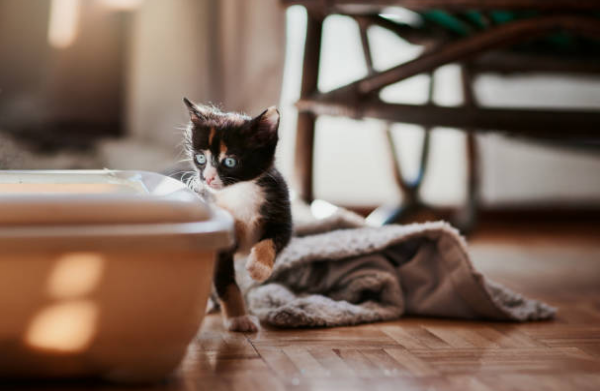
A Visit to the Vet Is Non-Negotiable
A vet appointment must be your first step before experimenting with different litter products, box positions, or rewards for your cat. Physical health issues stand as the majority cause for female cats to stop using their litter box.
Common medical causes:
● Your cat will develop negative litter box associations when suffering from a urinary tract infection because the condition brings painful sensations.
● Bladder stones, together with crystals, will produce painful symptoms that result in strained movements along with bloody urine.
● Diabetes and kidney disease will raise urination levels while also increasing frequency, which leads to nursing accidents.
● The constipation of an affected cat can make it refuse to use the box and instead react through frustrated squatting.
A medical approval by your vet triggers the investigation of behavioral elements and environmental aspects.
Cats are picky. And female cats? Sometimes extra picky.
Your cat may avoid using the litter box when it shows any signs of filthiness or smell, along with being placed in heavily trafficked locations. A dirty box could lead to:
● Peeing right next to the box
● Your cat will prefer using laundry piles and bed areas, along with rugs, before selecting the litter box for elimination.
● Cats who refuse to empty their bladders end up developing urinary tract infections together with other health problems.
What to do:
● Daily scoop operation is required, with second scoops resulting in superior outcomes.
● Regular weekly cleaning duties include replacing all contents of the litter box with fresh material.
● Logic-based cat litter should be odorless like natural materials while adopting the clumping texture of wild domestic sources.
● Clean the box with mild soap, whereas strong chemical cleaning solutions should not be used.
● The recommendation for litter box selection is to have one extra box than the number of cats. A single cat needs you to provide at least two litter boxes.
People underestimate the importance of litter box placement in their homes. Cats need personal space for privacy, together with assurance of safety.

Avoid placing boxes:
● Near a washer or dryer and other loud appliances
● In high-traffic or noisy areas
● Near food sources and beverages (cats naturally avoid these areas when eliminating)
Try instead:
● A quiet corner
● A low-stress room with minimal foot traffic
● A separate box for each floor of your home
The accessibility of litter boxes becomes crucial for both elderly cats and those with arthritis since they might find it difficult to climb up or descend stairs.
Cats are creatures of habit. Stressors such as routine changes or environmental modifications make cats avoid using their litter boxes. Female cats seem more vulnerable to environmental changes in their habitat, along with social settings.
Common stress triggers include:
● Moving to a new home
● Welcoming either a new family member or pet brings stress to cats.
● Changes in furniture or room layout
● Loud noises, construction, or fireworks
● Altered feeding or play routines
● Visits from guests or unfamiliar people
When stress affects a cat, it does not necessarily present as fear reactions or hiding behavior. Dry and loose stools signal stress in cats whose behavior changes to improper elimination. The reason why a cat moves her elimination outside of the litter box is not defiance, but it functions as a way to communicate. Your cat uses improper elimination to signal that one of her surroundings is not right.
What you can do:
● Establish a regular pattern that your cat can depend on each day.
● You should provide private areas that will make your cat feel comfortable and secure during times of stress.
● Allow your cat to engage in regular interactive games because this promotes decreased anxiety.
● Every pet in multi-cat households needs to have an adequate supply of litter boxes, together with food bowls and separate sleeping areas.
● Gather information about her actions so you can pinpoint particular stressing factors that need elimination or reduction if feasible.
The WOpet Smart Feeder provides valuable assistance to resolve these issues. The automation of scheduled feedings creates an automated mealtime system to establish regular routines, which lowers anxiety levels in addition to stopping your cat from waking you at uncomfortable hours throughout the night and morning. The establishment of regular habits leads to contentment together with reduced anxiety for cats.
Cats display similar behavioral problems when they are unhappy the same way children do. A female cat who starts ignoring her litter box often uses this behavior to communicate specific feelings towards you.
● The current type of litter does not please me.
● “I’m not getting enough attention.”
● “I want to go outside.”
● “I’m mad about the new cat.”
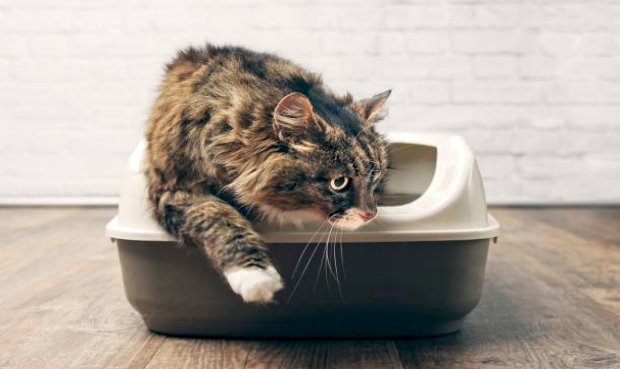
A cat establishes relationships with the environment through behavioral adaptations since environmental shifting without proper need fulfillment leads to noticeable behavioral alterations.
What to do:
● The problem can sometimes resolve when you use another type of litter.
● Increase playtime and bonding moments.
● Set up additional litter boxes or choose between exposing or concealing the boxes.
● A temporary training period of confinement might be the right solution.
When your cat urinates on walls or furniture instead of the litter box, she might be spraying territory rather than missing the box.
Stray cats establish their territory through spraying because litter box avoidance is not the problem.
It's especially common in:
● Multi-cat households
● The peeing behavior of unspayed female cats intensifies during their heat cycles and at all times when not spayed.
● Stressful environments
What helps:
● Spaying (if not already done)
● Reducing household stress
● Take advantage of enzymatic cleaners, which completely eliminate previous odor traces.
● The establishment of various safe areas becomes necessary in households that maintain multiple cats.
● A spayed female cat might spray occasionally even with the surgery, since this behavior remains a possibility—although quite rare.
Cats have opinions, strong ones. The female cat can stop using a certain type of litter or box mainly because she no longer finds it appealing.
Some cats prefer:
● Fine-grain, sand-like textures
● Open boxes over covered ones (or vice versa)
● Certain densities of litter (some people do not prefer deep piles)
● Big cups (particularly if she has grown or gained weight)
It is possible that you try different things and then keep an eye on her reaction to discover what she likes. You might establish what constitutes Primark’s litter by preparing a “litter buffet,” where the different litters are situated in different boxes for her to choose from.
All felines love their personal space, and in a steeply populated house with several cats, it is very easy for the cats to create havoc. One cat may attack another, thereby demoralizing her so much that she would be stripped from using her litter box.
Signs of conflict:
● One cat was present in the litter area as a security measure
● Chasing after elimination attempts
● Among the observed behaviors, cats tend to go to the door or windows to litter when they are ready to go, he said.
Solutions:
● Multiple boxes, spread far apart
● Separate feeding and sleeping areas
● There is a lot of vertical space to reduce resource competition
● One of the important rules to follow is to spend time to play with each of the cats separately.
If your cat has tepid or cold water, then it means that you need to reset it, given that it has now developed a strong habit of avoiding the box.
The reset process:
● Lock her in a small, however comfortable, room (preferably a lavatory)
● Ensure you offer a clean litter box, food, water, toys, and a comfortable bed or box filled with hay or shredded paper
● Accomplishments: Scoop the box twice a day and also perform the menial chore of ensuring that the box is clean
● Observe litter habits for 3–5 days
● After she spends a few days using the box, gradually guide her back into the other parts of the house one room at a time
● If she reverts to such behaviour, confine her to bed for a few more days
If your female cat is not using the litter box anymore, then there must be some issues, which include health, stress, or even the environment. Don’t freak out—watch the situation and effect minor changes so as to reassure her and make her feel safe once more.
Label:
Popular Post

What to Feed a Sick Dog With No Appetite? [2025 Guide]
May 16, 2023

Troubleshooting Common Issues with Automatic Pet Feeders: Tips & Tricks for Pet Owners
Oct 26, 2023
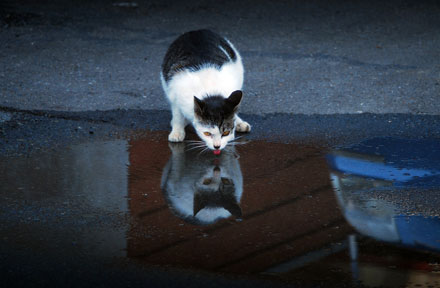
Why Does My Cat Cough After Drinking Water? 8 Potential Reasons
Mar 13, 2023
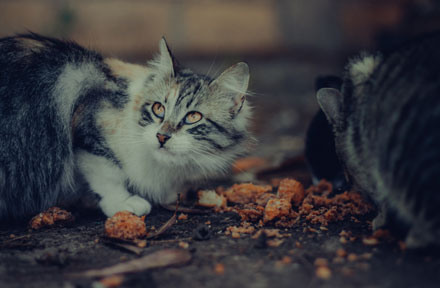
My Cat Only Eats A Little at A Time - What to Do?
Feb 27, 2023
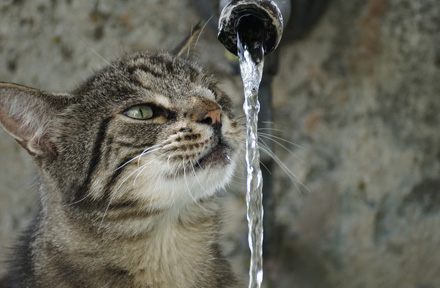
Why is My Cat Throwing up Water? Top 5 Causes Here
Feb 08, 2023
$99.99
$129.99
Copyright © 2025 WOPET. All Rights Reserved.